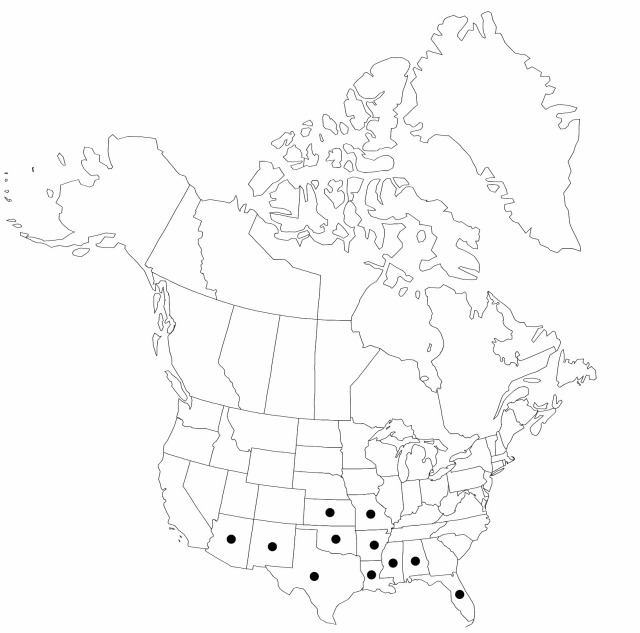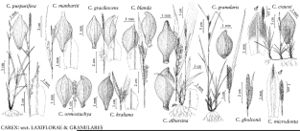Carex microdonta
Ann. Lyceum Nat. Hist. New York 3: 423. 1836.
Rhizomes long-creeping. Culms solitary (rarely 2–3 together), 10–56 cm. Leaves light green, cauline blades 5–36 cm × 2.1–5.9(–8.3) mm, widest leaves 2.8–8.3 mm wide. Inflorescences: peduncle of terminal spike 0.1–9.6 cm (2.6–9.6 cm if staminate spike 1); ligule of proximal bract 1.6–7.4(–9.4) mm; bracts shorter than to overtopping culms, longest bract blade (per plant) of distal lateral spike 6.2–18 cm. Proximal spikes sometimes staminate at apex, usually arising from proximal 1/2 of culms, (9–)13–37 × 4.8–7.8 mm. Terminal spike often with 1–3 much smaller staminate spikes near its base, 18–45 mm, separated from distal lateral spike (unless staminate). Pistillate scales triangular, elliptic, or ovate, 1.6–3.6 × 0.8–1.7 mm. Staminate scales with apex acute to awned. Anthers 2.44.6 mm. Perigynia olive green, ovoid to oblong-ovoid, 2.84.2 × 1.4–1.8 mm, 1.9–2.5 times as long as thick; beak 0.30.9 mm, bidentulate, teeth 0.10.3 mm. Achenes 1.9–2.7 × 1.2–1.6 mm. 2n = 64.
Phenology: Fruiting spring–mid summer (Apr–Jul, Jun–Aug in Trans-Pecos, Texas).
Habitat: Open, dry to moist, calcareous substrates, usually in rocky or wet prairies, swales, seeps, and ditches, characteristic of relic patches of blackland prairies, limestone glades, and chalk openings
Elevation: 20–1800 m
Distribution

Ala., Ariz., Ark., Fla., Kans., La., Miss., Mo., N.Mex., Okla., Tex.
Discussion
Carex microdonta occurs chiefly in the deep South and on the central and southern Great Plains. Plants are usually larger than those of C. crawei and more vigorously colonial, producing larger vegetative shoots that are more numerous in proportion to fertile ones. Whether or not the two taxa are ecologically distinct is a matter awaiting study.
Selected References
None.
